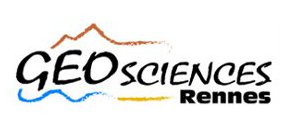Genomic data provide insights into the classification of extant termites
Résumé
A list of authors and their affiliations appears at the end of the paper
The higher classification of termites requires substantial revision as the Neoisoptera, the most diverse termite lineage, comprise many paraphyletic and polyphyletic higher taxa. Here, we produce an updated termite classification using genomic-scale analyses. We reconstruct phylogenies under diverse substitution models with ultraconserved elements analyzed as concatenated matrices or within the multi-species coalescence framework. Our classification is further supported by analyses controlling for rogue loci and taxa, and topological tests. We show that the Neoisoptera are composed of seven family-level monophyletic lineages, including the Heterotermitidae Froggatt, Psammotermitidae Holmgren, and Termitogetonidae Holmgren, raised from subfamilial rank. The species-rich Termitidae are composed of 18 subfamily-level monophyletic lineages, including the new subfamilies Crepititermitinae, Cylindrotermitinae, Forficulitermitinae, Neocapritermitinae, Protohamitermitinae, and Promirotermitinae; and the revived Amitermitinae Kemner, Microcerotermitinae Holmgren, and Mirocapritermitinae Kemner. Building an updated taxonomic classification on the foundation of unambiguously supported monophyletic lineages makes it highly resilient to potential destabilization caused by the future availability of novel phylogenetic markers and methods. The taxonomic stability is further guaranteed by the modularity of the new termite classification, designed to accommodate asyet undescribed species with uncertain affinities to the herein delimited monophyletic lineages in the form of new families or subfamilies.
Termites, or Isoptera, are a clade of eusocial cockroaches in a sistergroup relationship with the subsocial Cryptocercus wood roaches 1-6 . With over 3000 described species 7 , the diversity of termites is relatively low compared to hyper-diverse insect clades (e.g., Coleoptera or Lepidoptera). Termites achieve critical ecosystem functions, such as decomposing plant material, providing bioturbation of soils, and influencing water infiltration in soils of tropical and subtropical terrestrial ecosystems, where they are amongst the most abundant animals 8-15 . Termites are also well-known as major pests of wood in service, such as in buildings and constructions, utility poles, fencing, etc. 7,16 . In regions where they are found, they account for over half of total urban pest control costs 17-19 , excluding costs from insect-vectored diseases. Consequently, public opinion on termites has been shaped by, and the bulk of termite biology research has focused on, a handful of pestiferous termite genera. The combination of moderate species diversity and high abundance, leading to economic and ecological importance, has made termites of considerable interest to insect taxonomists. The discovery of new extant taxa is rare at the supra-generic level (but see Romero Arias et al. 20 ), although it is relatively common at genus and species levels.
The higher classification of termites has undergone substantial changes since its inception more than a century ago 21-31 . In the Treatise on the Isoptera of the World, the last comprehensive catalogue published on the global termite fauna, extant termites were divided into
Domaines
Paléontologie| Origine | Fichiers produits par l'(les) auteur(s) |
|---|---|
| licence |




